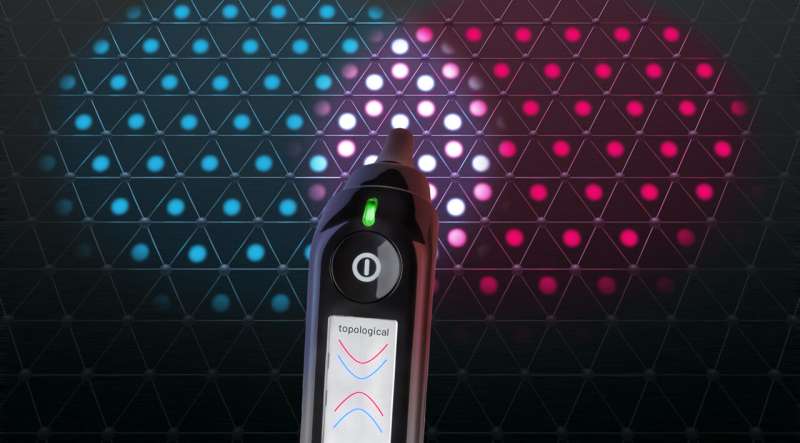This article has been reviewed according to Science X's editorial process and policies. Editors have highlighted the following attributes while ensuring the content's credibility:
fact-checked
peer-reviewed publication
proofread
Method milestone for quantum physics: Rapid test for topological 2D materials

Topological quantum materials are hailed as a cornerstone of future technological advancements. Yet, validating their exceptional qualities has always been a lengthy process.
Researchers at the Cluster of Excellence ct.qmat have now developed an experimental technique that systematically identifies two-dimensional topological materials through a rapid test. This breakthrough could help accelerate the progress of this booming class of materials.
Their findings have been published in the journal Physical Review Letters.
In 2007, Professor Laurens W. Molenkamp, a founding member of the Würzburg-Dresden Cluster of Excellence ct.qmat—Complexity and Topology in Quantum Matter—provided the first experimental proof of topological insulators, a novel class of materials. These materials stand out because although their interior behaves like an electrical insulator, they conduct electrons on their surface without any resistance.
Since that groundbreaking discovery, global interest in these materials has surged. This is driven by their critical role in a potential materials revolution and their promising applications in quantum technologies, such as the development of "cold chips" that are powerful, energy-efficient, and don't generate waste heat.
"Currently, detecting topological insulators experimentally entails highly complex research. It requires a large team and a substantial amount of time to prepare a sample of the material. Moreover, successful detection is never assured," notes ct.qmat's Würzburg spokesperson Professor Ralph Claessen.
Rapid test for the materials revolution
But now, a ct.qmat research team in Würzburg has devised a systematic method to identify two-dimensional topological quantum materials in record time using a far simpler measurement technique. "Essentially, in addition to a promising material sample, all you really need is special X-rays," explains Dr. Simon Moser, the project lead from JMU Würzburg.
"The required light particles should be high-frequency and circularly polarized, meaning they possess angular momentum. This can be achieved using any synchrotron light source.
"For instance, our samples were irradiated at the Elettra Sincrotrone in Trieste and at the Diamond Light Source, the UK's national synchrotron science facility at the Harwell Science and Innovation Campus in Oxfordshire."
What sounds simple is actually a significant breakthrough in researching topological quantum materials. "If you secure a slot at a synchrotron, you can determine within about a week whether a material is a topological insulator. With the traditional method, this takes at least a doctoral thesis," notes Moser.
Spinning success with dichroic photoemission
The essence of the new rapid testing method lies in dichroic photoemission. The material sample is exposed multiple times to high-frequency light with varying polarization. Initially, only electrons that rotate clockwise, for example, are released from the material. Subsequently, only the electrons that rotate counterclockwise are released.
Detecting the different rotation directions of electrons using dichroic photoemission and thus uncovering their topology isn't a new idea. In 2023, another ct.qmat team from Würzburg used this method to analyze the topology of a kagome metal for the first time.
"They used circular photoemission to investigate the kagome metal. We focused on the methodology and developed a kind of recipe that now always works, not just by chance," says Moser, explaining his team's new approach. "Our rapid test systematically makes the topology of the electrons visible."
As the researchers have a longstanding track record of investigating the two-dimensional quantum material indenene, they also used this material to develop the rapid test method. In addition, they are already applying the principle to other materials. A recent experiment involved irradiating a bismuthene sample, and the data will be analyzed shortly.
More information: Jonas Erhardt et al, Bias-Free Access to Orbital Angular Momentum in Two-Dimensional Quantum Materials, Physical Review Letters (2024). DOI: 10.1103/PhysRevLett.132.196401
Journal information: Physical Review Letters
Provided by Würzburg-Dresdner Exzellenzcluster ct.qmat



















